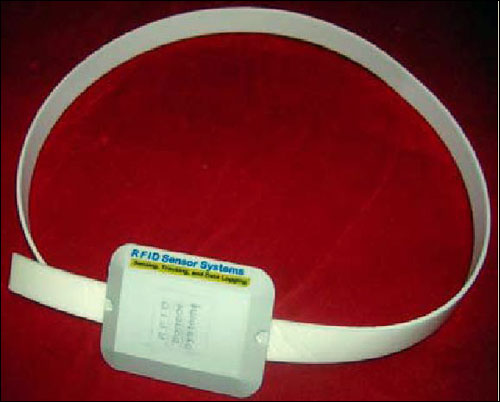Jun 14, 2011New Jersey wireless systems company RFID Sensor Systems has begun meeting with potential partners to market its new passive ultrahigh-frequency (UHF) EPC Gen 2 RFID tags that include various sensors and can transmit sensor data without the use of a battery. The firm developed the technology to provide end users with small, inexpensive RFID sensor tags that do not require battery replacement. One of the two tags is designed for cardiopulmonary monitoring by health-care organizations, while the other is a temperature-monitoring tag that can be used to track temperatures in real time, as well as maintain a temperature history for logistics and other industries, when transporting such temperature-sensitive products as fresh produce.
RFID Sensor Systems was founded 15 years ago, under the name New Jersey Microsystems, by William Carr, the company's CEO and a professor emeritus of physics and electrical and computer engineering at the New Jersey Institute of Technology (NJIT). (Carr retired from NJIT in 2008.) Initially, the company—located on NJIT's Economic Development Center's Newark campus—developed micro-electromechanical systems (MEMS) sensors including a sub-10-milligram inertial measurement unit (IMU) for the U.S. Navy, as well as an infrared MEMS imager and magnetometer for the U.S. Army. Some of the MEMS sensors operated in conjunction with RFID tags. This year, however, the company is offering RFID sensor tags to the health-care industry and to commercial markets, such as logistics.

Both tags will cost approximately 50 percent of the cost of most active RFID sensor tags, Carr says.
The ST100 tag can be sold with an I003 reader from RFID Sensor Systems, either as a stationary or handheld battery-operated device, or be used with an interrogator complying with the UHF EPC Gen 2 or ISO 18000-6C standard. The solution—including the tag and the reader—is known as the S100 Passive RFID Cardiopulmonary Monitoring System. The S100 tag measures 3.25 inches by 4.6 inches, is 0.6 inch thick and stores a 96-bit Electronic Product Code (EPC) number. The tag can be attached to a patient via a Velcro chest strap that wraps around a user's chest, or in another form factor, attached directly to the skin with an adhesive strip, similar to how a Band-aid is attached. The latter form factor is intended for monitoring a person's health over a shorter period of time.
Sensors built into the tag measure a wearer's breathing and heart rates whenever the tag is powered by the transmissions of an EPC Gen 2 reader. The I003 reader can capture the unique ID number and sensor data from the tag at a distance of up to 20 feet. That information could then be sent to a user's back-end system via a cabled USB connection to a PC or laptop. Alternatively, if a user purchased its own UHF Gen 2 reader, it would need to make a software modification to read the sensor data. The I003 reader itself also contains RFID Sensor Systems software, to display the breathing and heart rate data.
In addition, the company provides a battery-assisted power (BAP) version of the tag that allows its sensors to take temperature readings in the absence of a reader, which are then stored over long periods of time. Because so little battery power is required, Carr says, the battery would likely survive many years before requiring replacement, though the exact length of time depends on the particular battery chosen and the frequency of tag reads.
Both the passive S008 and the S100 systems have a forward data rate (transmission of information from reader to tag) of up to 64 kilobits per second (kbps), with a return data rate from the tag to the interrogator of up to 640 kbps.
The tags are able to transmit sensor data at the relatively long distance of 20 feet or more, due to RFID Sensor Systems' patented antenna design, which Carr declines to describe.
All of the tags are expected to have a life expectancy of 30 years or more, Carry says. The tags operate between 860 and 960 MHz, he adds, and can be used in Europe, North America or Asia.


